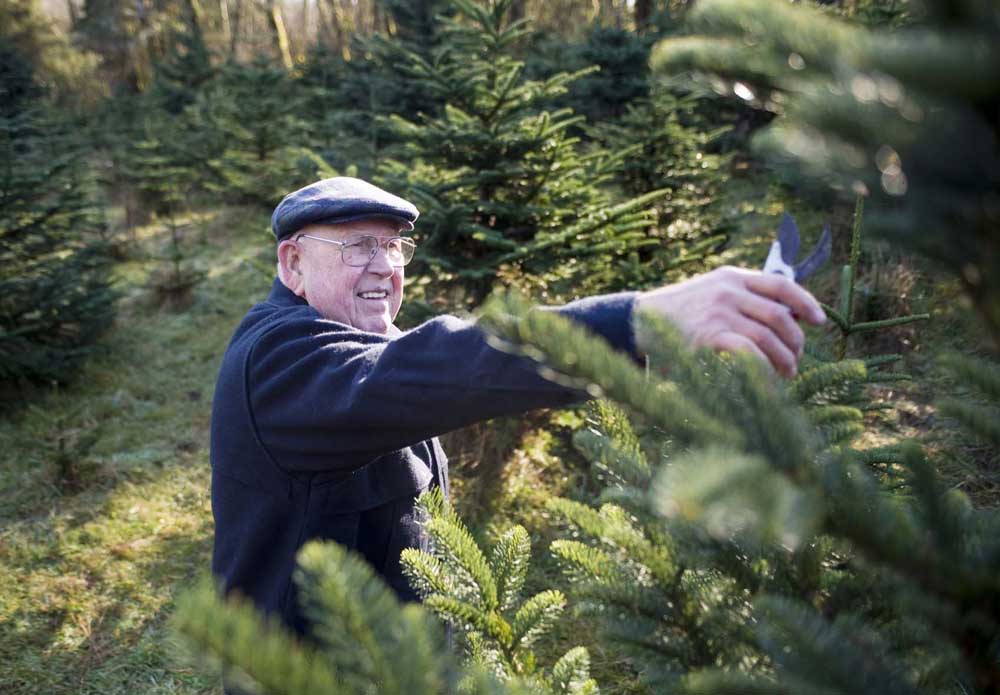If a tree falls … Oregon farmers see Christmas tree shortage
Published 5:44 am Tuesday, November 15, 2016

- The Daily Astorian/File Photo Bob Oja takes a moment to trim a noble fir at Oja's Christmas Tree Farm on Youngs River Road in 2013. Oja and his wife, Mary, started growing trees more than 30 years ago and had have around 3,000 grand and noble firs to choose from.
Retailers across the U.S. are coming to an uncomfortable realization as the holiday season approaches.
The abundant supply of Christmas trees they’ve come to expect in recent years has now turned into a shortage.
“They didn’t realize how quickly we had rolled over to an undersupply,” said Bob Schaefer, CEO of Noble Mountain Tree Farm near Salem.
While farmers are benefiting from higher prices, the shortage has sparked concerns of market share loss to artificial trees.
The industry won’t be able to quickly ramp up production because trees typically spend two years in the nursery before being planted out in the field, Schaefer said.
The problem is aggravated by insufficient recent seed crops, he said.
For Noble firs, the most popular tree species, an adequate supply of seedlings may not be available until 2019, Schaefer said.
The immediate impact is on prices.
Trees are selling for 8 percent to 15 percent more than last year, Schaefer said. Noble firs are selling for roughly $28 while Douglas firs are selling for up to $18, he said.
In terms of supply, the shortage isn’t so severe that retailers will end up with empty tree lots, said Betty Malone, co-owner of Sunrise Tree Farm near Philomath.
“I think everybody will get something, just maybe not the species or size they want,” Malone said.
Much of the is shortage was caused by farmers getting out of the tree business during the recent glut, which suppressed prices, she said.
Between 2010 and 2015, the number of Christmas tree growers dropped more than 30 percent, from 699 to 485, according to Oregon Department of Agriculture data.
Tree sales in Oregon plummeted 26 percent during that time, from 6.4 million trees to 4.7 million trees, according to a survey by U.S. Department of Agriculture’s National Agricultural Statistics Service.
Meanwhile farmers were planting fewer trees than they were selling.
About 3.7 million trees were planted in 2015, down from 5.6 million in 2010, according to the statistics service.
“A lot of people got burned in the last decade,” said Casey Grogan, whose family owns Silver Bells Christmas Tree Farm near Silverton.
Planting Christmas trees has also appealed to fewer farmers due to growth in alternative crops, such as hazelnuts and grape vines, Grogan said.
Grogan said he is worried that high prices could push some consumers toward artificial trees, but he said growers need to recoup years of losses.
“There’s ground to make up financially for people who stuck it out through the oversupply,” he said. “We need higher prices to stay in the game.”
Drakes Crossing Christmas Trees, which also grows seedlings, is cautiously increasing production as the industry’s financial outlook improves, said Jan Hupp, its manager.
“We’re not going whole hog, but we are doing it,” Hupp said.
With few seedlings in the pipeline, it’s unlikely the Christmas tree industry will face another major surplus until 2025, he said.
However, the industry will likely again swing into overproduction eventually, Hupp said.
“Name a single commodity crop that doesn’t have a cycle like that,” he said. “It’s going to be good for a while, but not forever.”





